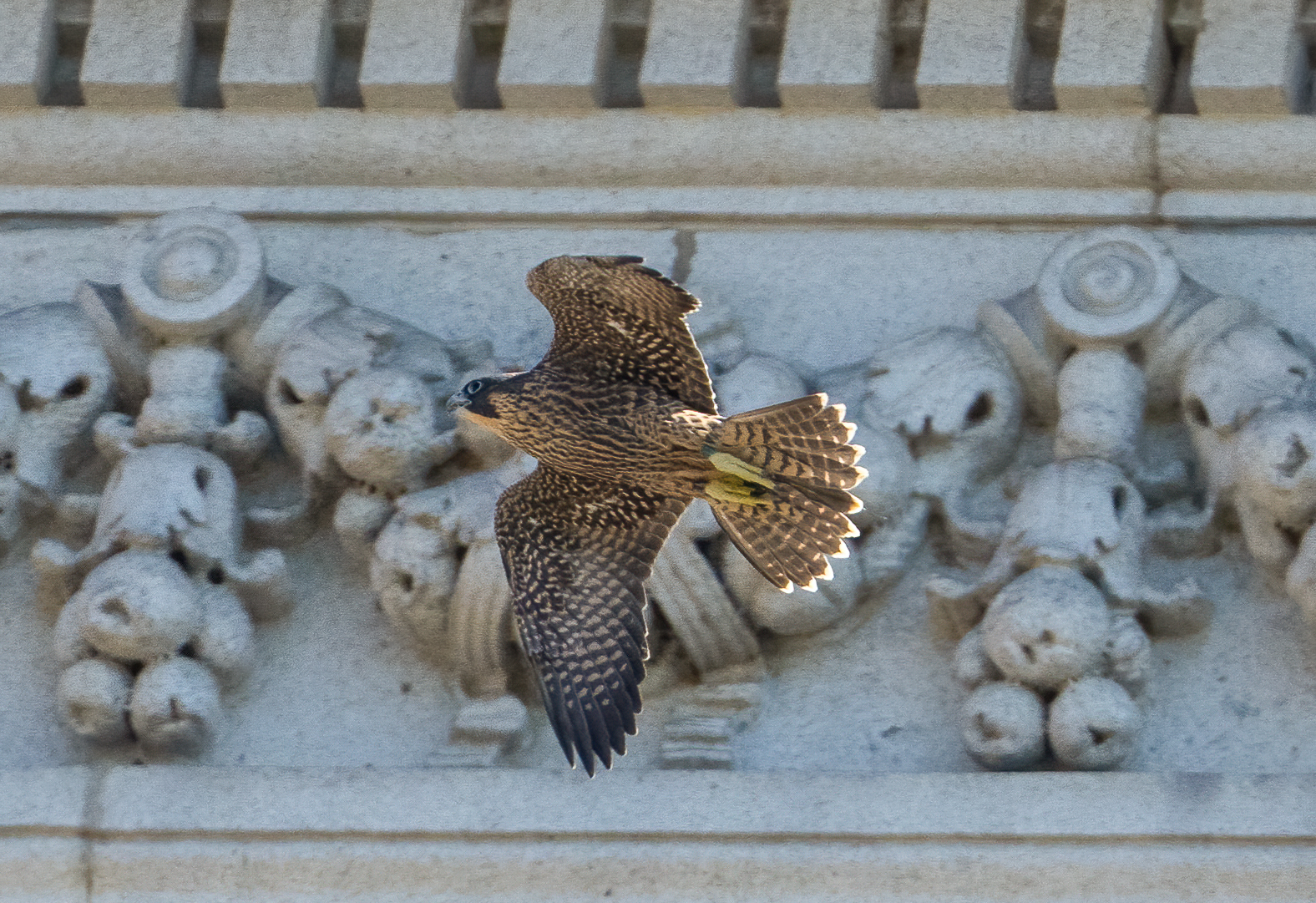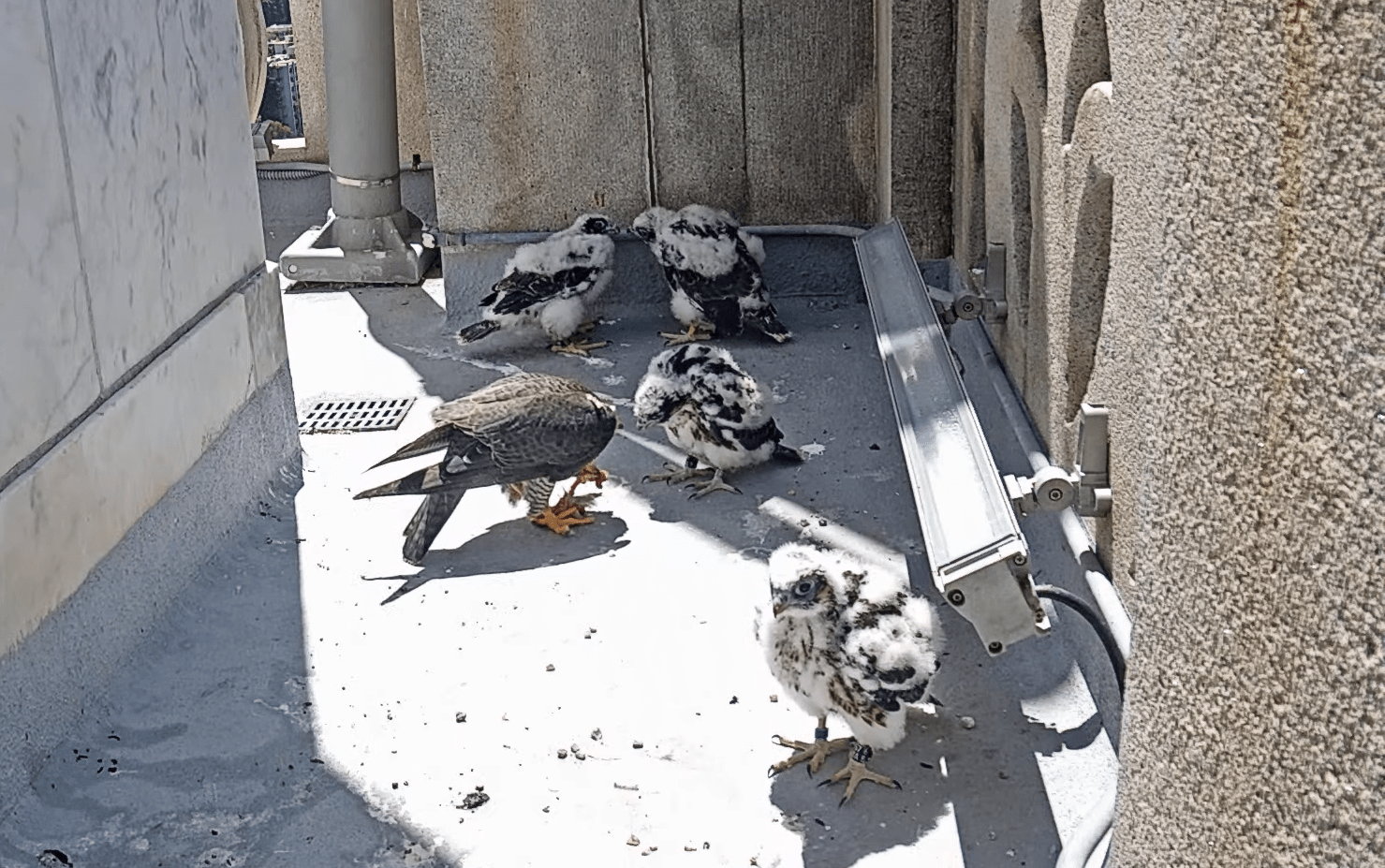
Equinox, the peregrine falcon better known as Nox, was rescued Wednesday morning at the Berkeley Marina.
Annie and Archie’s youngest chick broke a bone in his right wing and had to be rescued after a marina employee recognized the bird in distress.
To learn more about Nox’s progress, go to the Cal Falcons’ Facebook page.
Nox was taken to Wildcare Bay Area in Marin, where he is awaiting to be taken to another facility for surgery.
Alison Hermance, communications director at Wildcare Bay Area, said Nox broke his metacarpal bone.
“It will require a pinning surgery,” she said. “It’s a more serious injury on a bird like Nox.” But, she said, “The good thing is it’s a clean break — a break within the middle of the bone.”
Nox is one of four chicks Annie and Archie had in April. He hatched on April 24, two days after his siblings Solstice, Aurora and Eclipse. They are the first hatch between Annie and her new partner, Archie, who perch atop UC Berkeley’s Campanile. And this is the first time all of Annie’s eggs have hatched. She now has borne 22 falcons.
The peregrine falcons began to take flight on June 6.
Nox was found laboring on a boat in the marina around 10 a.m. Wednesday when an employee noticed the injured falcon and called Craig Nikitas, chief operator of Bay Raptor Rescue.
Nikitas arrived about 50 minutes later and said he removed his watch and car fob just in case, “I had to go in the water because I knew he would fly away.”
He was able to grab a hold of Nox, who was taken to Wildcare Bay Area.
Bird rescues are nothing new for Nikitas, who usually averages 100 to 120 annually. Sometimes, his rescues take him from Fremont to Novato in a day. Nox is the fifth peregrine falcon he has rescued this spring.
“It is something I do,” he said. “I began this free service to help birds of prey in distress in 2015.”
He has already performed over 150 rescues so far this year. The uptick in rescues is because he has more volunteer colleagues helping him.
“I am like the EMT; I bring the patient to them. They don’t have the staff (to perform rescues). I have 30 years of experience trapping birds of prey.”
He called this time of the year “baby season,” when young birds try their flying skills. He said it starts with owls, kites, red-tail hawks and hawks.
Hermance said Nox is just experiencing life as a teenager.
“It’s just like if you hand a 16-year-old the keys to the car, you just don’t know what is going to happen to them,” she said.
Put another way, Nikitas said, “It’s more like they’re an 18-year-old kid. The parents are saying go out and get your own apartment and get a job. The parents kind of boot them out.”
No one knows precisely how Nox was injured. Nikitas said falcons can dive at 230 miles per hour. A young falcon can quickly become disoriented when navigating urban spaces.
Nikitas said Nox would likely be taken to UC Davis’ California Raptor Center, where he will be there to recover, rehab and regain his flight muscles.
“The injury has a really good chance of healing and … for Nox to be the falcon he was intended to be.”



